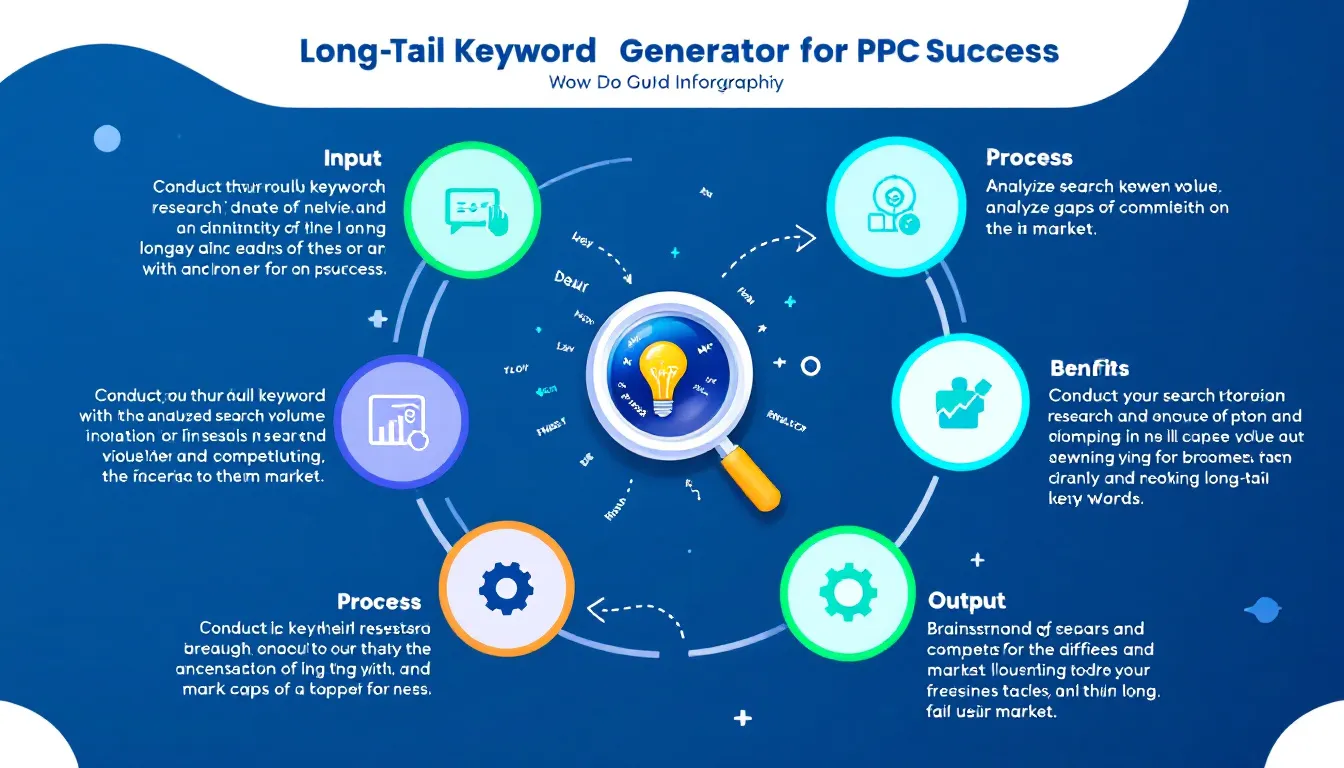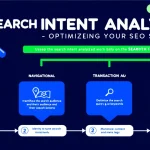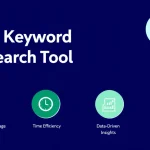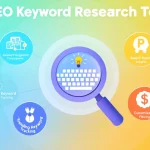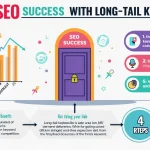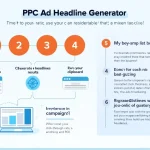Long-tail Keyword Generator
Generating keywords...
Is this tool helpful?
How to Use the Long-Tail Keyword Generator Tool Effectively
To generate highly targeted long-tail keywords for your paid search campaigns, follow these step-by-step instructions:
- Industry/Business Niche: Enter your specific industry (e.g., “Pet Supplies” or “Home Renovation Services”)
- Primary Keywords: List your main keywords, one per line (e.g., “dog food,” “puppy supplies,” “pet accessories”)
- Search Intent: Specify the user intent (e.g., “purchase ready” or “research phase”)
- Geographic Targeting: Input your target location if applicable (e.g., “Northeast USA” or “Australian cities”)
- Competitor Keywords: Add relevant competitor keywords if known
Understanding Long-Tail Keyword Generation for Paid Search
Long-tail keyword generation is a strategic approach to identifying specific, highly targeted search phrases that potential customers use when they’re closer to making a purchase decision. These keywords typically consist of three or more words and often have lower search volume but higher conversion potential.
The Science Behind Long-Tail Keyword Generation
The tool employs advanced natural language processing to analyze and combine various factors:
- Industry-specific terminology and trends
- User search behavior patterns
- Commercial intent indicators
- Geographic relevance
- Competitive landscape analysis
Benefits of Using the Long-Tail Keyword Generator
1. Enhanced Campaign Targeting
By focusing on specific long-tail keywords, your paid search campaigns can target users with higher purchase intent, resulting in:
- Improved click-through rates (CTR)
- Lower cost-per-click (CPC)
- Higher conversion rates
- Better return on ad spend (ROAS)
2. Competitive Advantage
Long-tail keywords often face less competition, allowing you to:
- Secure better ad positions
- Reduce bidding costs
- Capture highly specific market segments
3. Budget Optimization
The tool helps allocate your advertising budget more effectively by:
- Identifying high-intent keywords
- Reducing wasted spend on broad terms
- Focusing on converting traffic
Practical Applications and Use Cases
E-commerce Example
Industry: Women’s Fashion
Primary Keywords:
- dresses
- women’s clothing
- fashion accessories
Generated Long-tail Keywords:
- affordable midi dresses for work
- plus size summer maxi dresses with sleeves
- sustainable women’s clothing brands USA
- designer handbags under $500
B2B Services Example
Industry: IT Consulting
Primary Keywords:
- cloud services
- IT support
- digital transformation
Generated Long-tail Keywords:
- enterprise cloud migration services cost
- 24/7 IT support for small business
- digital transformation consulting healthcare industry
Maximizing Results with the Keyword Generator
Best Practices
- Update your keyword list regularly to capture seasonal trends
- Test different combinations of search intent and geographic targeting
- Monitor competitor keywords for industry insights
- Use generated keywords in combination with negative keywords
Implementation Strategy
- Group similar long-tail keywords into themed ad groups
- Create specific ad copy matching search intent
- Develop targeted landing pages for each keyword group
- Set appropriate bid adjustments based on keyword performance
Frequently Asked Questions
How often should I generate new long-tail keywords?
It’s recommended to refresh your keyword list monthly to capture changing market trends and seasonal variations in search behavior.
Can I use the generated keywords for both Google Ads and Bing Ads?
Yes, the generated long-tail keywords are platform-agnostic and can be used across all major paid search platforms.
Should I include all generated keywords in my campaigns?
Start with the most relevant keywords that align with your business goals and budget, then expand based on performance data.
How do I determine the best search intent for my business?
Analyze your sales funnel and identify where paid search fits in your customer journey. This will help you select the most appropriate search intent for keyword generation.
What’s the ideal number of long-tail keywords per ad group?
Keep ad groups tightly themed with 10-20 closely related long-tail keywords for optimal campaign management and performance.
How do seasonal trends affect long-tail keyword generation?
Seasonal trends can significantly impact search behavior. Generate new keywords before peak seasons to capture seasonal intent and adjust campaigns accordingly.
Advanced Tips for Keyword Implementation
Quality Score Optimization
Improve your Quality Score by:
- Creating highly relevant ad copy for each long-tail keyword
- Developing specific landing pages that match search intent
- Maintaining strong click-through rates through regular optimization
Budget Allocation Strategy
Maximize your return on investment by:
- Starting with a conservative daily budget for new keywords
- Scaling budget allocation based on performance data
- Adjusting bids based on keyword conversion rates
Performance Monitoring
Track key metrics including:
- Conversion rate by keyword
- Cost per acquisition (CPA)
- Return on ad spend (ROAS)
- Click-through rate (CTR)
- Average position
Important Disclaimer
The calculations, results, and content provided by our tools are not guaranteed to be accurate, complete, or reliable. Users are responsible for verifying and interpreting the results. Our content and tools may contain errors, biases, or inconsistencies. We reserve the right to save inputs and outputs from our tools for the purposes of error debugging, bias identification, and performance improvement. External companies providing AI models used in our tools may also save and process data in accordance with their own policies. By using our tools, you consent to this data collection and processing. We reserve the right to limit the usage of our tools based on current usability factors. By using our tools, you acknowledge that you have read, understood, and agreed to this disclaimer. You accept the inherent risks and limitations associated with the use of our tools and services.
